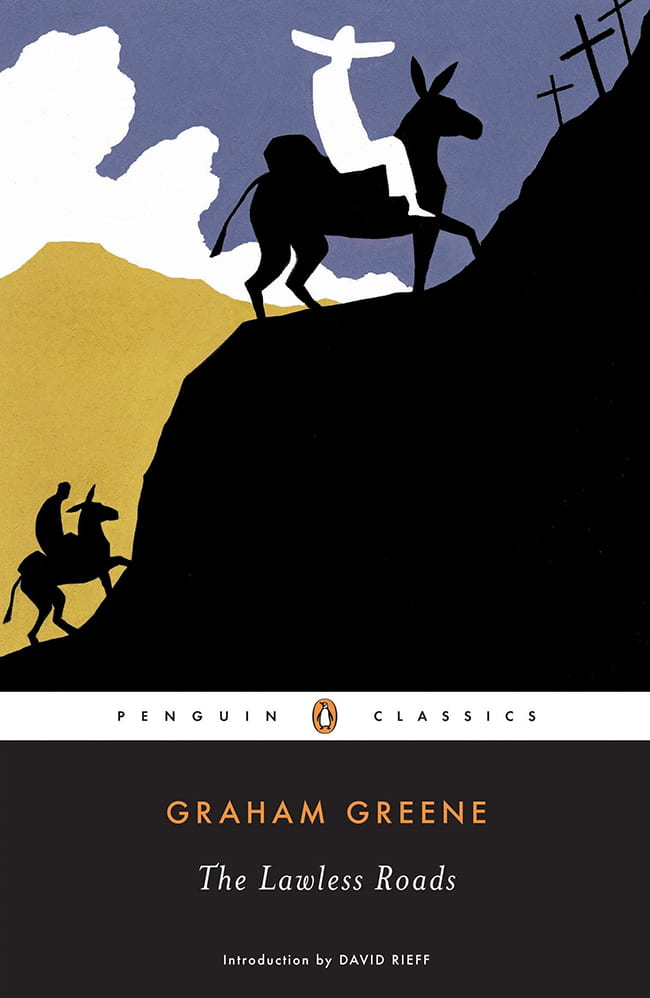
In Review
Imagining Greene in Islamabad
By Chris Herlinger
It is 4 am, I’ve just arrived in Pakistan, and I am thinking about Graham Greene. That may seem incongruous—Greene, the chronicler of Christian faith in the terrain of desperation and loss some called “Greene-land” (a term Greene himself loathed), had little interest or experience in what our popular media now call “the Muslim world.” But I have arrived on a humanitarian assignment in Pakistan and within hours will see a young American friend and colleague working in Islamabad whom I associate a bit with my reading of Greene.
Two years ago, this friend had gone to Africa to work with a church-based humanitarian and development agency and returned home to the United States disappointed, hurt, and confused. He had discovered corruption by the higher-ups of the agency, left the country and told his former employers that he knew. It was a seemingly simple case of right and wrong—he, the American, was right, his African employers wrong. But I was in the midst of a midlife discovery of Greene, who the critic Ian Thomson called a “prolific chronicler of wretchedness and damaged faith,” and I saw the experience through a new lens. As we ate dinner one night in Harlem, I asked my friend if he had left anyone at risk in leaving abruptly. (No, he assured me. No.) Did he feel he was acting as a “moralistic American?” (Americans, particularly white American Protestants, are often sharp targets for Greene’s satire. Most famously, of course, there is Alden Pyle, the not-so-innocent American portrayed in The Quiet American, Greene’s prescient work about misguided U.S. idealism in Vietnam.) “No,” my friend told me. “I just couldn’t keep working there in good conscience.”
Greene affirmed no consistent ideology as a writer, perhaps save one: that the writer be prepared to “change sides at the drop of a hat. He stands for the victims and the victims change.”
My friend was right in what he did and I did not envy him for what he went through. I also knew that my friend is no Alden Pyle—he is idealistic, but also smart and wise about the relationship of Americans to the rest of the world. Yet his experience did seem emblematic of that corner of the world Greene observed with cool eyes and trenchant pen—a world Marie-Françoise Allain, perhaps Greene’s most penetrating interviewer, memorably labeled as his “gray universe of second-rate journalists, small-time crooks with a habit of evil, unfulfilled actors, poor sods—like the rest of us.”1 Let me add to that group a new subset: the humanitarian workers and bloggers or mixtures of both who have chosen to work in caldrons like Afghanistan, Darfur, or Haiti and will learn (or perhaps, more regretfully and tragically, not learn) the lessons that come with the snares and traps set by idealism in an ambiguous, dicey, fallen world.
The issue of idealism remains particularly acute; as Greene wrote in his 1943 novel, The Ministry of Fear: “Courage smashes a cathedral, endurance lets a city starve, pity kills . . . we are trapped and betrayed by our virtues.” For Greene, one reason we are trapped by our virtues is that the line between virtue and vice remains thin indeed. ” ‘The dangerous edge of things,’ ” Greene told Allain in 1979, “remains what it always has been—the narrow boundary between loyalty and disloyalty, between fidelity and infidelity, the mind’s contradictions, the paradox one carries within oneself.” But also, as Greene wrote in The Lawless Roads (1939), a travel book about Mexico that was a tryout for his masterpiece, The Power and the Glory (1940): “[T]here is no peace anywhere where there is human life. . . . The horror may be the same, it is an intrinsic part of human life in every place: it attacks you in the Strand or the tropics.” And yet, for Greene there was, and is, grace in this life: “[B]ut where the eagles are gathered together, it is not unnatural to expect to find the Son of Man as well.”
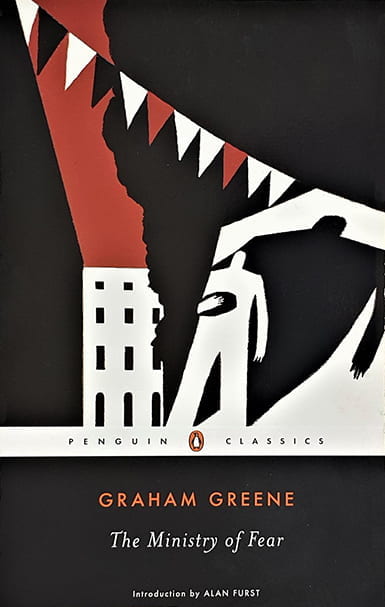
The Ministry of Fear
I came to Graham Greene (1904–91) late. I had read The Quiet American during a college study of the literature of the Vietnam War and it did not appreciably impress or move me—too flat, I thought. My first encounter with The Third Man, Greene’s most successful and enduring film project, likewise went over my head. I can still see my college roommate’s puzzled expression of disappointment. He adored the gray-hued film about postwar Vienna, and couldn’t understand why I didn’t. Now I do love it—it is probably my favorite movie, if finding pleasure in a film means finding new depths, lights, and shadows (literal and otherwise).
But I was young, and my indifference as a twenty-year-old to Greene was probably not unusual. Greene is not an author for, or about, youth. I think my sudden embrace of Greene as I entered my fifties—starting with a reading of The Power and the Glory, Greene’s chronicle of an unnamed whiskey priest fleeing authorities in postrevolutionary Mexico—probably has, indeed, does have, to do with age. Greene is a chronicler of life’s disappointments, those experiences known to all by a certain age: the attendant problems, failures, and heartbreaks around love, career, and money; the experience of loyalties tested and sometimes frayed (even betrayed). And for those of us with a certain temperament, world view, or life experience (like journalism or humanitarian work in difficult places), we see in Greene’s cool, chiseled, objective prose the concerns, and sometimes even the experiences, of our lives. We also find there the perennial nagging questions—sometimes answered, more often not—about the world, about evil, about religious faith. And yet those very qualities can give us pause as readers. Greene does not seem to invite hero-worship, something he hints at in The Ministry of Fear:
Our heroes are simple: they are brave, they tell the truth, they are good swordsmen and they are never in the long run really defeated. That is why no later books satisfy us like those which were read to us in childhood—for those promised a world of great simplicity of which we knew the rules, but the later books are complicated and contradictory with experience; they are formed out of our own disappointing memories—of the V.C. [vice-consul] in the police-court dock, of the faked income tax return, the sins in corners, and the hollow voice of the man we despised talking to us of courage and purity. . . . The two great popular statements of faith are “What a small place the world is” and “I’m a stranger here myself.”
Though questions about faith appeared in The Ministry of Fear, that novel was primarily an espionage thriller (later turned into a film noir staring Ray Milland), and such a work was not on the college reading lists I remember from the early 1980s. Greene’s work was still thought “too popular”—for every Power and the Glory or Brighton Rock there is an “entertainment” like Travels with My Aunt. Greene was not a modernist innovator like William Faulkner or Vladimir Nabokov (a fact he well recognized and accepted with good grace; Greene told Allain: “Compared with the giants my creativity is pitiful”). And in an era when expressions of faith in serious literature were not the norm, Greene’s embrace of religious themes was no doubt seen as a throwback, though Greene himself felt that characters in the novels of modernists like Virginia Woolf, E. M. Forster, and Jean-Paul Sartre did not come alive on the page often enough because they lacked “a religious dimension.” These and other factors have been cited as the reasons why Greene never won the Nobel Prize in Literature, though there have also been rumors that one of the Nobel judges, in a personal pique, held a grudge against Greene because of jealousy over a sexual matter. Greene was not particularly discrete about his affairs with numerous women or the pleasures he sought at brothels. Yet Greene never divorced his estranged wife—one of several affirmations of his traditional Roman Catholicism that also included a lament about the vernacular replacing the Latin Mass following the Second Vatican Council.
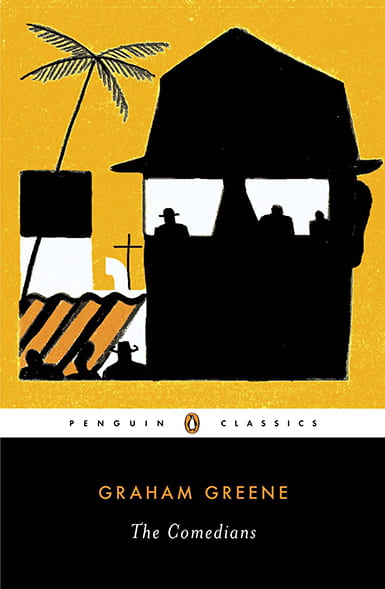
The Comedians
There are more pointed reasons to be wary of Greene. Reviewing a collection of Greene’s letters in the Times Literary Supplement in 2008, the critic Frederic Raphael opined that Greene was a “globetrotting fugitive” who “always sported a certain insularity.” Greene, he wrote, “was always an Englishman abroad. For all his outlandish errantry and taste for louche company, he relied on upper-middle-class charm and arrogance when he needed to pull rank or strings. His penchant for dictators, such as General Torrijos or ‘Fidel,’ was of a piece with the presumption that an Englishman of a certain class, or fame, had the right to knock on any door.” In her 2009 review of Greene’s letters in The Nation, Michelle Orange wrote that Greene was a “stranger with no shortage of calling cards: devout Catholic, lifelong adulterer, pulpy hack, canonical novelist; self-destructive, meticulously disciplined, deliriously romantic, bitterly cynical; moral relativist, strict theologian, salon communist, closet monarchist; civilized to a stuffy fault and louche to drugged-out distraction, anti-imperialist crusader and postcolonial parasite, self-excoriating and self-aggrandizing, to name just a few.” In his introduction to The Lawless Roads, David Rieff was much kinder, though he acknowledged that however “much of an outcast as a Catholic, a writer, and a bohemian he felt himself to be in Britain, Greene had assimilated the imperial attitudes of his time and social class.”
It is true that Greene, like all writers, can disappoint. Greene’s portrayal of Haiti in The Comedians, even in the admirable cause of exposing the brutality of the government of François “Papa Doc” Duvalier, can border on being racist at places. Yet The Comedians is remarkably prescient at several moments on the seemingly never-ending dynamics in that troubled country, including corruption surrounding development assistance. “Haiti was a great country for projects,” Greene wrote. “Projects always mean money to the projectors so long as they are not begun.” Even more tellingly, Graham writes of a Haitian priest whose words suggest what is to come in Haiti, and indeed in much of the Global South in the following years—the call for the church to take a stand on behalf of the poor and the oppressed. The Haitian priest preaches:
The Church is in the world, it is part of the suffering in the world, and though Christ condemned the disciple who struck off the ear of the high priest’s servant, our hearts go out in sympathy to all who are moved to violence by the suffering of others. The Church condemns violence, but it condemns indifference more harshly. Violence can be the expression of love, indifference never. One is an imperfection of charity, the other the perfection of egoism. In the days of fear, doubt and confusion, the simplicity and loyalty of one apostle advocated a political solution. He was wrong, but I would rather be wrong with St. Thomas than right with the cold and the craven. Let us go up to Jerusalem and die with him.
This suggests both a topical awareness of a world changing—a world that would soon bring forth figures like liberation theologians Gustavo Gutiérrez, Leonardo Boff, and Jean-Bertrand Aristide—but also a keen sense that contemporary events are always rooted in age-old dilemmas, histories, and traditions. To be both topical and timeless is not easy, and to his credit, Greene, then in his sixties, was not untouched by the social tumult and changes of the late 1960s and 1970s. He evolved. The Human Factor, a 1978 novel about a white British spy married to a black South African, shows quiet empathy and insight about racial dynamics both in South Africa and in Britain. And the 1973 novel The Honorary Consul, with its sharp look at the social realities facing Latin America, including the character of a “guerrilla priest,” should be on the reading list of any course that chronicles the history of liberation theology. (Greene himself embraced the Sandinista government and lauded the common cause between Latin American leftists and the progressive Roman Catholic Church of the 1980s.)
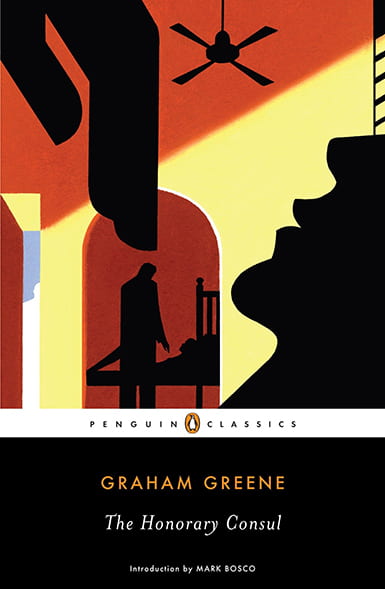
The Honorary Consul
Tellingly, Harvard physician and health advocate Paul Farmer prefaced a chapter in his Pathologies of Power, an examination of health and human rights, with a direct quote from The Honorary Consul, in which there is a description of the main character. Eduardo Plarr is a physician who becomes involved in political intrigue that, in almost archetypal Greene fashion, involves the doctor, the “guerrilla priest,” and a group of militant leftists. Plarr’s awareness of social problems stems from his work as a physician:
Dr. Plarr was a good listener. He had been trained to listen. Most of his middle-class patients were accustomed to spend at least ten minutes explaining a simple attack of flu. It was only in the barrio of the poor that he ever encountered suffering in silence, suffering which had no vocabulary to explain a degree of pain, its position or its nature. In those huts of mud or tin where the patient often lay without covering on the dirt floor he had to make his own interpretation from the shiver of the skin or a nervous shift of the eyes.
Farmer notes that the silence of the poor “is of course imposed from above,” and reflects on Greene’s character in light of contemporary realities:
Perhaps if Greene’s Dr. Plarr had been an even better listener, he might have heard the true cacophony of the barrio. For underneath this silence lies the pent-up anger born of innumerable small indignities, and of great and irremediable ones. Underneath this silence lie the endless jeremiads of the suffering sick. Structural violence generates bitter recrimination, whether it is heard or not. . . .
The silence of the poor is conditioned. To describe it as stoic, as Greene’s character does, is not to be wrong, but rather runs the risk of missing the great eloquence beneath the silence.2
Farmer is right about the depth and meaning of such silences, but credit Greene, the Oxford-educated product of a prominent British family, with getting a good part of the story right. During my trip to Pakistan, which involved covering the humanitarian response following the August 2010 floods, I saw doctors in poor mountainous areas treating patients who were silent, nervous, frightened. The physicians and medics were doing exactly what Dr. Plarr did—making interpretations “from the shiver of the skin or a nervous shift of the eyes.” To get a detail like that right, you not only have to be a good writer and good observer, you have to be an empathetic human being.
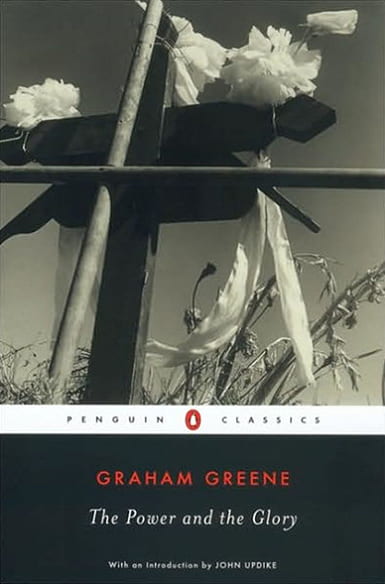
The Power And The Glory
You could say much the same about an author who writes a novel about a priest on the run in postrevolutionary Mexico. In The Power and the Glory, Greene portrayed what he believed was Christianity’s basic essence and element: its sense of moral failure. “That is its very foundation,” Greene said to Allain. “For once you’re conscious of personal failure, then perhaps in future you become a little less fallible.” This is not to say that the priest is merely a figure onto which Greene placed a theological conceit. Rather, we come to see the unnamed priest as a vulnerable man with many imperfections—a drinker, the father of a child, someone who grapples with pride and ego. (“The good things of life had come to him too early—the respect of his contemporaries, a safe livelihood. The trite religious word upon his tongue, the joke to ease the way, the ready acceptance of other people’s homage . . . a happy man.”) Such imperfections could be overlooked or forgiven when times were easy and good. But they weren’t. It is the 1930s in southern Mexico, and Mexican authorities are trying to stamp out the influence of the church, an institution they view as “medieval.”
Greene’s priest has become a disheveled and pathetic figure, roaming the countryside. His ultimate martyrdom lacks any real glory: facing his executioner, the priest falters, makes “jerky movements with his arms,” tries to say something (“what was the phrase they were always supposed to use?”), but can’t get it out because his mouth is too dry. After a single executioner’s shot, “the little man was a routine heap beside the wall—something unimportant which had to be cleared away.”
The stark, honest simplicity of this description has its foundation several pages before, when Greene, in some of his finest writing, describes the cleric when he realizes his execution is imminent:
When he woke up it was dawn. He woke with a huge feeling of hope which suddenly and completely left him at the first sight of the prison yard. It was the morning of his death. He crouched on the floor with the empty brandy-flask in his hand trying to remember an Act of Contrition. ‘O God, I am sorry and beg pardon for all my sins . . . crucified . . . worthy of thy dreadful punishments.’ He was confused, his mind was on other things: it was not the good death for which one always prayed. He caught sight of his own shadow on the cell wall; it had a look of surprise and grotesque unimportance. What a fool he had been to think that he was strong enough to stay when others fled. What an impossible fellow I am, he thought, and how useless. I have done nothing for anybody, I might as well have never lived. His parents were dead—soon he wouldn’t even be a memory—perhaps after all he was not at the moment afraid of damnation—even the fear of pain was in the background. He felt only an immense disappointment because he had to go to God empty-handed, with nothing done at all. It seemed to him, at that moment, that it would have been quite easy to have been a saint. It would only have needed a little self-restraint and a little courage. He felt like someone who has missed happiness by seconds at an appointed place. He knew now that at the end there was only one thing that counted—to be a saint.
We know, of course, that Greene’s priest was not a saint. But we also know that he was assuredly not going to God “empty-handed, with nothing done at all,” because as he had traversed southern Mexico in the journey to his Calvary, the priest had become something nearly as important as a saint: he had been faithful. He had served the poor, saying Mass behind closed doors at great personal risk. He had small experiences and glimpses (if fleeting) of grace, while taking stock of the priest, and the man, he never imagined himself becoming: humbled, hungry, humiliated.
Yet the reader of The Power and the Glory comes to understand that the priest probably became a better man—certainly a better and truer priest—by losing the outward traces of power and prestige he had once coveted. We shouldn’t be surprised by this. Greene affirmed no consistent ideology as a writer, perhaps save one: that the writer be prepared to “change sides at the drop of a hat. He stands for the victims and the victims change.” In discussing how he came to feel and experience his religious faith and his conversion from Anglicanism to Catholicism, Greene told Allain that he recognized “the first inroads during my visit to Mexico in 1938. It’s all bound up with my loyalty to the underdog—and so it has been ever since,” he said. “In Mexico the underdogs were the Catholics.”
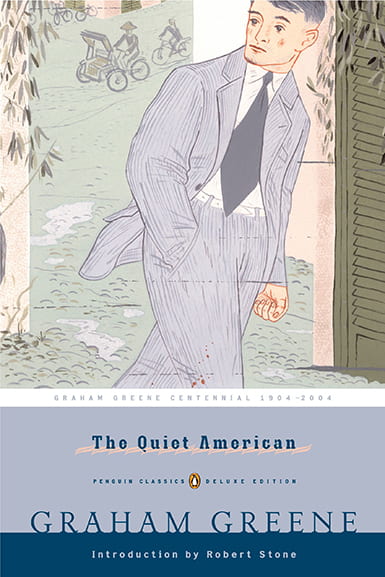
The Quiet American
This awareness of the varied meanings of power is what gives The Power and the Glory much of its heft; power viewed in a different way is also what gives The Quiet American and some of Greene’s other writing about Vietnam much of their continued and lasting resonance.
To write about The Quiet American is to write about Greene’s antipathy toward the United States, a fact that was well known, and likely gave his American readers occasional pause. Allain noted that Graham was proud of displaying “an obstinate anti-Americanism, to the point seeming almost indulgent toward the Communists”—an attitude Greene did not deny. He told Allain he would go “to almost any length to put my feeble twig in the spokes of American foreign policy.”
The root of Greene’s anti-Americanism had multiple causes: some have guessed it had to do with the possible resentment some of his class felt toward the country that eclipsed Great Britain after the Second World War. Greene himself said he felt oppressed by the “terrifying weight” of American consumer culture, and acknowledged that a critic’s observation about what Greene truly detested, American liberalism, “wasn’t far wrong.” If Greene meant the liberalism represented by such figures as disparate (and yet as similar) as Woodrow Wilson and Robert McNamara, as Walter Lippmann and Hubert Humphrey, the disdain makes some sense. Viewed from outside the United States, the face of American liberalism at early and mid-century was idealistic and had a patina of innocence. And innocence, Greene once said, “is like a leper with his bell. Innocence is not to be trusted.” Why? Because “[i]nnocence can be exceedingly foolish, disastrous—like that of Pyle, the quiet American.”
Alden Pyle, a young member of the U.S. Embassy’s economic mission (though presumably a CIA operative), is described by Thomas Fowler, a world-weary British journalist who narrates the novel, as just a few days out from Harvard, “absorbed already in the dilemmas of Democracy and the responsibilities of the West; he was determined—I learnt that very soon—to do good; not to any individual person but to a country, a continent, a world.” With his “gangly legs and his crew-cut and his wide campus gaze, he seemed incapable of harm.” But we learn that this is not the case: “I never knew a man who had better motives for all the trouble he caused,” observes Fowler, who discovers that Pyle, a proponent of a “Third Force” to fight communism, is involved in a terrorist bombing made to look like it was committed by communists—a novelistic turn that Greene claimed was based on a true incident involving the CIA.
Greene, who reportedly drew the outlines of the novel (and Pyle) after meeting an American aid worker who lectured the author about a “Third Force,” downplayed any prescience in The Quiet American (the novel dates from 1955) about the U.S. role in Vietnam because “it was very easy for someone who had spent four winters in Indochina to grasp the situation in which the Americans were going to be enmeshed.” Greene said he was merely suggesting “the American undercurrents” in what was still a French war. “It’s not a question of foresight but of ground reconnaissance,” Greene said. “Every good journalist should be able to recognize the signs of the times.”
Greene was such a journalist himself, and several passages of a remembrance of his time in Vietnam (nearly identical to passages he penned in The Quiet American) are beautifully crafted pieces of understated horror. Here Greene describes a “vertical raid,” or bombing mission, he took with a French pilot:
Down we went again, away from the gnarled and fissured forest towards the river, flattening out over the neglected rice fields, aimed like a bullet at one small sampan on the yellow stream. The gun gave a single burst of tracer, and the sampan blew apart in a shower of sparks; we didn’t even wait to see our victims struggling to survive, but climbed and made for home. I thought again, as I had thought when I saw a dead child in a ditch at Phat Diem, “I hate war.” There had been something so shocking in our fortuitous choice of a prey—we had just happened to be passing, one burst only was required, there was no one to return our fire, we were gone again, adding our little quota to the world’s dead.
I put on my earphones for the pilot to speak to me. He said, “We will make a little detour. The sunset is wonderful on the Calcaire. You must not miss it,” he added kindly, like a host who is showing the beauty of his estate; and for a hundred miles we trailed the sunset over the Baie d’Along. The helmeted Martian face looked wistfully down on the golden groves, among the huge humps and arches of porous stone, and the wound of murder ceased to bleed.
The cool, elegant, objective—if slightly icy—language is a marvel, because it is also punctuated by an awareness of the true horror of events (“the sampan blew apart in a shower of sparks”); a sense of some possible guilt (“adding our little quota to the world’s dead”); and an ironic sense of the tragic entanglements of colonialism (“like a host who is showing the beauty of his estate”).
This is one of several passages that make it easy to understand why, aside from any personal animus he felt toward Americans, Greene came to criticize a war that eventually passed from the French to the Americans. As an observer who had witnessed firsthand the horror of the kind of colonial war being fought in Vietnam, Greene had seen enough. Looking out from the window of a French fighter jet, he could see the underdogs—the war’s victims. It didn’t matter if those who “gave a single burst of tracer” were French or American.
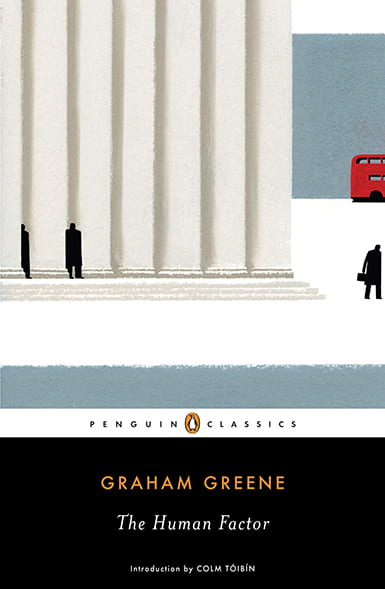
The Human Factor
Eventually, of course, they were American, just as they are now in a different part of the world (also aided by the French). Not terribly far, hundreds of miles at the most, from where I sit at the Islamabad airport, bursts of American tracers punctuate another war. It is 5 AM now, two weeks after my arrival, and I am returning home to New York. I am leaving at Ramadan and at just the time that an American Protestant minister is causing an international crisis with his threats (carried out later, in early 2011) to burn Qur’ans—threats that have put Islamabad on edge. I think I can imagine what Graham Greene might have said about this, but I still have to be careful. In many ways, our time can seem very far indeed from Greene’s: the world of Cold War espionage, martini-fueled lunches on the island of Capri, the privileging of haunted, burnt-out men (and it was nearly always men, white heterosexual men) trying to find traces of their faith in unlikely places.
But is that world really so far away? Ours is still a world of coups d’état and of hungry children, of terrorism and misplaced American idealism. Inexplicably, George W. Bush trotted out the figure of Alden Pyle in his arguments for the war in Iraq. (Now, there’s a case where I am certain of what Greene would say.) “We’re part of this world, aren’t we?” Greene once mused. “We’re affected by this sort of life. We’re at the heart of the disorder.”
Indeed we are. As I sit in the airport’s waiting area, I think of the muddled attempts by Pyle to create and gain power for his country (also mine) in a far-off land. I recall something one of my other favorite writers, Garry Wills, once observed about the sheer folly of such efforts: if power is “getting others to do one’s will,” Wills wrote in a 1981 meditation on the Kennedy era, there is “something obviously unhealthy in the concept of a whole world ready to do one nation’s will. Yet America has yearned toward that unnatural condition, trying to force on others the relation of children to a parent.”3 I think about that as I spot other Americans waiting to leave Islamabad (are they spies? journalists? aid workers?) and realize that all of us, either directly or indirectly, still work under the shadows, whether we like it or not, of Alden Pyle and American “Third Forces,” only now in Pakistan and Afghanistan.
And perhaps a few of us, not unlike Greene’s whiskey priest, are also on the run, mindful of Greene’s observation that the Christian “inhabits a territory bordering on Good and Evil, and it’s bandit country.” We experience the sting of failure and the mysteries of faith in a still-fallen world, understanding that our lives, our work, and our works are imperfect, limited, and perhaps only rarely blessed with grace. But that should not signal our abandonment of God, nor does it signal God’s abandonment of us.
Toward the end of his life, Graham Greene acknowledged experiencing a kind of failure as both a man and as an artist, saying “there is no such thing as success. The priest can’t hope to become a saint—or else it’s an illusory dream which vanishes with time; the writer can’t hope to write a book to equal those of Tolstoy, Dickens or Balzac.” Marie-Françoise Allain asked Greene if he still felt “hounded by God.” He replied: “I hope so. I hope so. I’m not very conscious of His presence, but I hope that He is still dogging my footsteps.”
Notes:
- Marie-Françoise Allain, The Other Man: Conversations with Graham Greene, translated from the French by Guido Waldman (Simon and Schuster, 1983).
- Paul Farmer, Pathologies of Power: Health, Human Rights, and the New War on the Poor (University of California Press, 2005), 25–26.
- Garry Wills, The Kennedy Imprisonment: A Meditation on Power (Houghton Mifflin, 1981), 297.
Chris Herlinger, a Resident Fellow at Harvard Divinity School in 2005, is a New York-based freelance journalist and a writer with the humanitarian organization Church World Service. His book on Haiti, Rubble Nation: Haiti’s Pain, Haiti’s Promise, will be published by Seabury Books this fall.
Please follow our Commentary Guidelines when engaging in discussion on this site.

